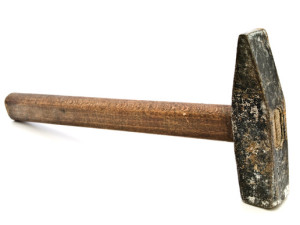We don’t determine the value of something generally based on its lack of value for a particular purpose. If I need a hammer for a particular job for which my screwdriver is not helpful, it doesn’t therefore follow that my screwdriver is worthless and should be thrown away. If I want to play football, I need not cast off balls in all other forms. They serve other purposes.
The Apocrypha is like this. The previous post in this series describes what the Apocrypha is: a collection of books dating from the inter-testamental period that are of dubious nature in some sense. They are considered fully canonical by almost nobody, but Roman Catholics do view them as having deutero-canonical status. In short: they aren’t scripture and aren’t useful for deriving authoritative doctrine. They don’t reveal the character and nature of God, the plan of salvation, or serve as an infallible guide to living a life pleasing to God. They aren’t useful resources as scripture.
Although not useful as scripture, it does not follow that they aren’t useful for anything. This would be to fall into the trap of the old hammer/screwdriver fallacy (also known as the only-useful-ball-is-a-football fallacy) described above.
In fact, while the Protestant Reformers made clear that the books of the Apocrypha were not scripture, they insisted that these books were still quite valuable. They encouraged Christians to read and study these books. Most Protestant Bibles (not just Roman Catholic ones) were printed with the apocryphal books between the Old and New Testaments for quite some time. The reason these books ceased to be included was not due to some de-valuing of these books, but instead reflected a desire on the part of printers to print shorter (and therefore less expensive) bibles. This is the same kind of thinking that led in our day to printing only the New Testament and Psalms.
If not useful as scripture, of what value is the Apocrypha? The Apocrypha is useful to help understand the historical and cultural context of the inter-testamental period and, in turn, of the New Testament. The Apocrypha is also useful to understand the literary genres of the New Testament. In short, the Apocrypha is extremely valuable background material.
The Historical and Cultural Context of the New Testament
When the Old Testament ends in Malachi 4, the Israelites live in a tiny client kingdom of the Persian Empire. The population is centered in Jerusalem and its environs. There is little happening in the Galilee or Trans-Jordan from a Jewish perspective. The Temple is rebuilt, but it is a tiny edifice, a mere shadow of the glory of Solomon’s impressive structure.
When you turn the page of your bible to Matthew chapter 1, you turn forward over 400 years of history. Gone are Persians; Rome is the dominant Empire now. There are also people called Herodians, Sadducees, Pharisees, and folks called Zealots (none of these groups were on the scene in the OT). The Jewish population has exploded and there are Jews living all the way up in the Galilee. The Temple is now Herod’s mammoth Temple Complex – one of the most astonishing structures ever constructed by man. In short: everything is different.
How did we get here? What is going on? Who are these people and why are they doing the stuff they’re doing? Why do the Jews seem to expect a Messiah who will be a military leader and temporal king? What is the context for all of this? One of the best ways to fill in some of the gaps is to go read some of the Apocrypha, especially a book like 1 Maccabees, which will help to fill said gaps.
Understanding the literary Genres of the New Testament
Another reason the Apocrypha has real value for New Testament Bible readers is that it helps give us a glimpse into the kinds of literature that inter-testamental Jews were reading and writing. There are many different types, or genres, of literature. If you go into a book store today you’ll see different sections for different types of books. Right now you could find a whole section devoted to Amish Romance (Why???), another devoted to Sci Fi, another to Humor, etc. Each type of literature has its own rules. A Murder Mystery novel follows a particular form, with certain rules governing that particular genre.
This is true of the New Testament. The NT includes the book of Revelation. Revelation is categorized as “apocalyptic.” That is the name of the genre. We don’t have that genre in our bookstores. But the Jews did! They had other apocalypses. One important apocalypse is found in the Apocrypha. It is called 2 Esdras. When you want to interpret a book like Revelation, it is important to know the rules that govern interpretation of the genre of books like Revelation. The Apocrypha provides us with a repository of this kind of information, thereby helping shed light on our interpretation of books which are genuinely canonical.
